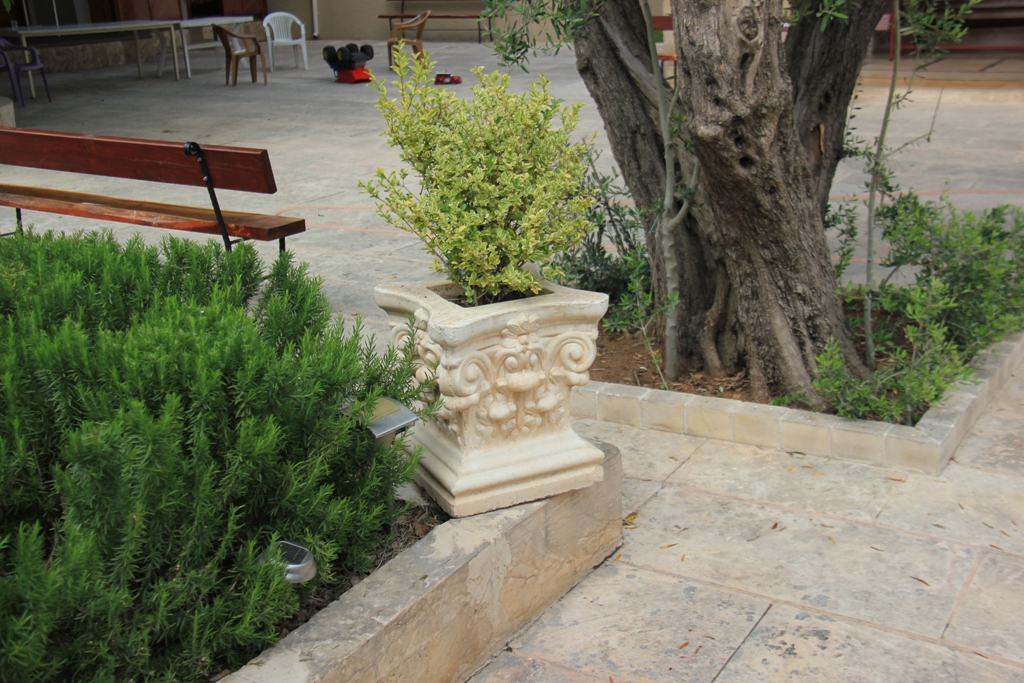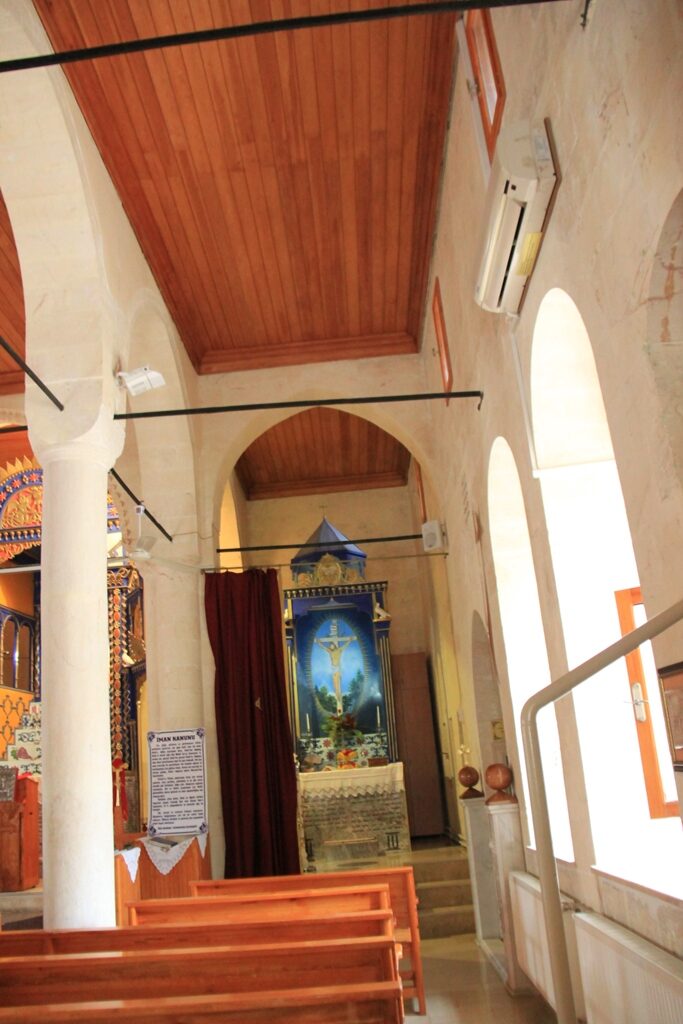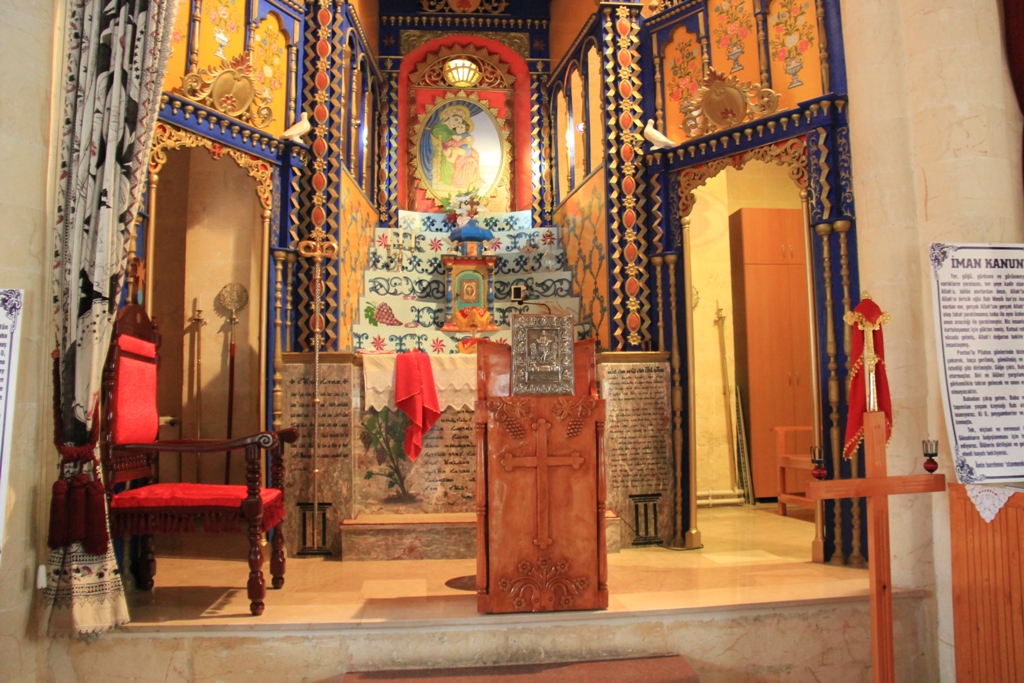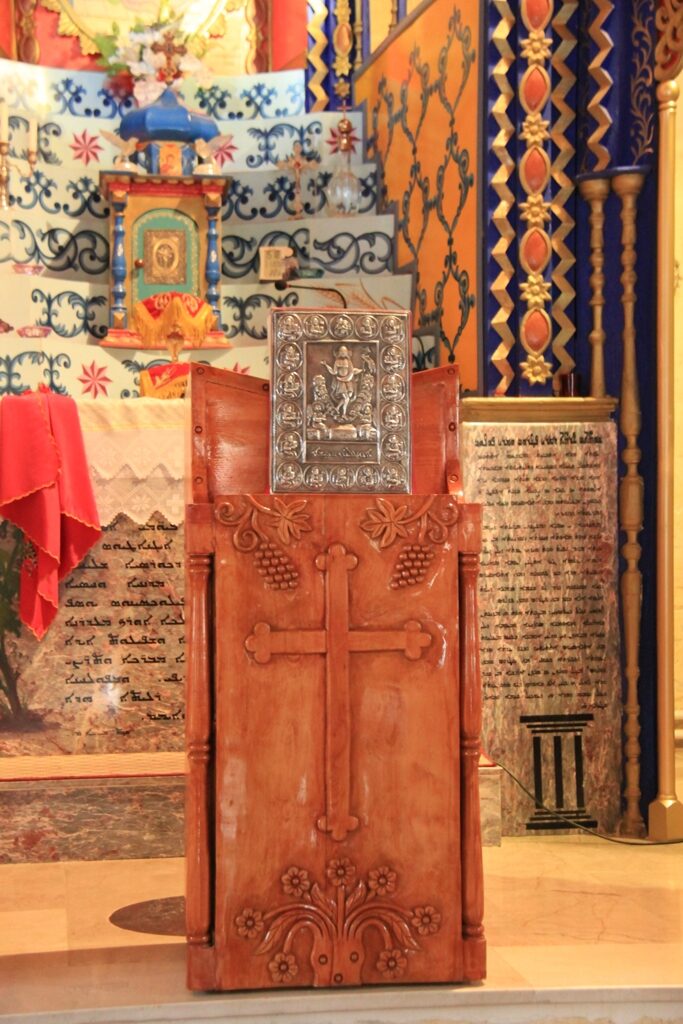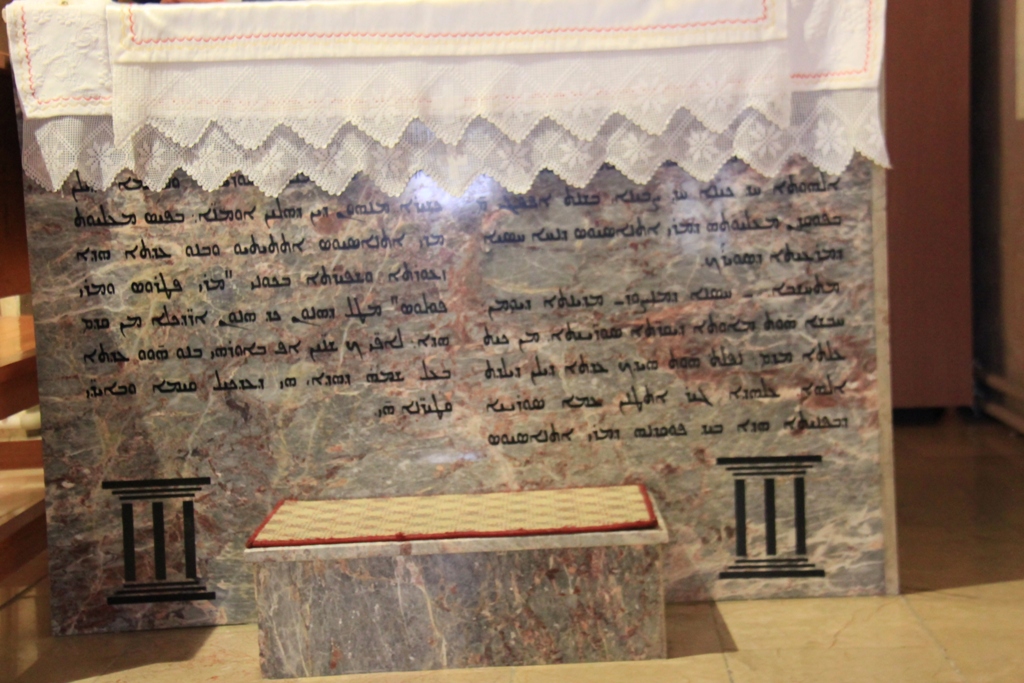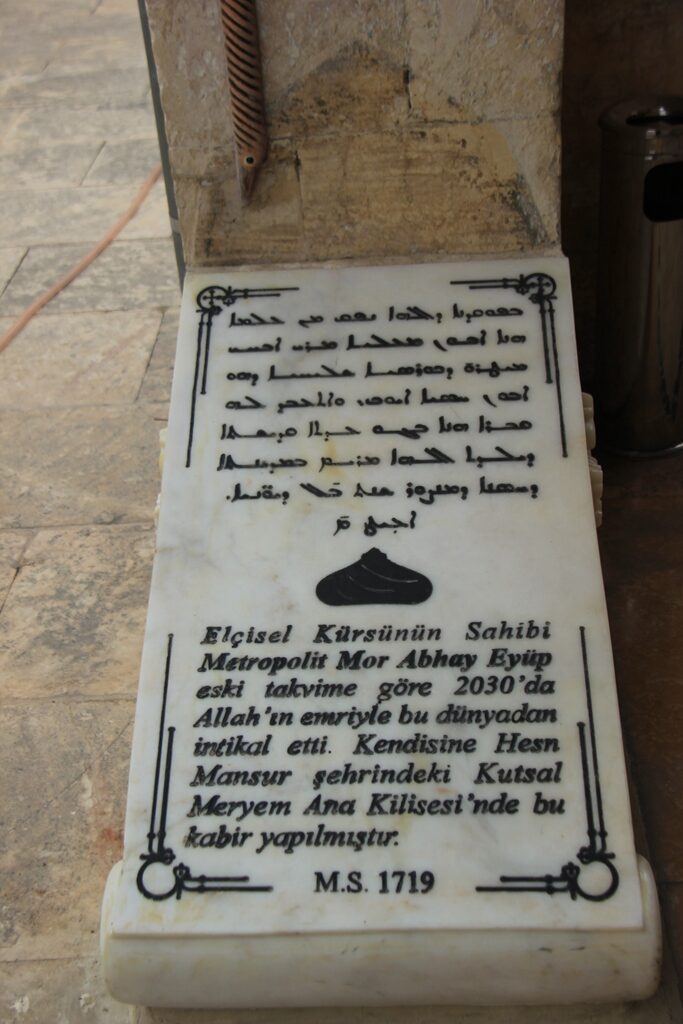MOR PETRUS MOR PAVLUS KİLİSESİ – ADIYAMAN
ADIYAMAN VE ÇEVRE İLLER SÜRYANİ KADİM METROPOLİTLİĞİ
(MOR PETRUS MOR PAVLUS KİLİSESİ)
Adıyaman tarihinde Süryaniler önemli bir yere sahiptir. Adıyaman’ın eski adının Süryanicede Hesno d’Mansur’dur. Bellidir ki, Süryanilerin bu bölgedeki köklü varlığına işaret etmektedir. Adıyaman merkezinde hem nüfus açısından hem de sahip oldukları eserler açısından zengin olmalarına rağmen günümüze kadar ulaştırabildikleri yapı olarak; Mara Mahallesinde bulunan Mor Petrus ve Mor Pavlus Süryani Kadim Kilisesidir ve Süryani Kadim Mezarlığıdır.
Adıyaman Süryani Kilisesinin bulunduğu alan, ilk kez 1701 yılında Metropolitlik kurulmak amacıyla atılan Meryemana kilisesinin temelleridir. O tarihten itibaren bu kilise Adıyaman’da bulunan Süryanilere hizmet vermiştir. Kilisenin ilk kurucusu Kadasetli Patrik Petrus’un emriyle, Siverek Metropoliti Mor Atanasiyos Denho’dur. Atanan ilk Metropolit, bugün halen mezarı kilise avlusunda bulunan Metropolit Mor Abhay Eyüp’tür. Buranın son metropoliti ise, mezarı kilisenin yan sunağı bölümünde bulunan Mardinli Mor Kurillos Mansur Rahip Ĥallo’dur. Süryaniler, başta Gerger ve Samsat olmak üzere bölgenin genelinde sayısızca kilise ve manastırlar kurmuşlardı. İbadet ve eğitim merkezi olarak faaliyet yürüttükleri dönemlerde önemli ilmi ve ruhani şahsiyetler yetiştirdi. Samsatlı Lukyanus ve diğerleri. Adıyaman’ın tek açık ve faal kilisesi de, yukarıda bahsettiğimiz bir çok kilise ve manastırlardan sadece birisidir. Bu kilise, 1883 yılında Meryemana kilisesinin yıkılması sonucu başka bir isimle kurulmuştur. Yeni kurulan kilise, yukarıdaki tarihte Urfa’dan getirilen Süryani taş ustalarının eseridir. Kilisenin mimari yapısı incelendiğinde, Urfa’da bulunan adaş kilisenin mimarisiyle tıpa tıp benzemektedir. Bu kilise 1905’te ve 1953’te restore edilmiştir.
19. Yüzyılın sonlarında ve 20. Yüzyılın başlarından itibaren Adıyaman’da Süryanilerin sayısı hızlıca azalmasıyla kilise bazı dönemler dini hizmet alanlarında aksamalara mazhar olmuştur. 1964 yılından itibaren nüfusun yok denecek kadar azalması, kiliseyi olumsuz yönde etkilemişti. Zaman zaman başka yerlerden (Mardin, İstanbul) gelen din adamları dışında, merkezde varlığını sürdüren birkaç aileden başka Süryani ailesi kalmamıştı. Uzun süre boş kalan kiliseye önce 1999 yılında Metropolit Yusuf ÇETİN ziyaret ettiler. Daha sonra 2001’de Rahip Melki ÜREK sayın Patrik tarafından atandı ve kilise tekrar ibadete açıldı. Kilisenin açılmasıyla toparlanan Hıristiyan (Süryani, Ermeni) aileleri teklifi ve Patrik hazretlerinin onayıyla Rahip Melki’nin Metropolitliğe terfi edilmesiyle Ülkemizde bulunan dört Süryani metropolittin dördüncüsüdür. Bu sayede Süryaniler için önem taşıyan Adıyaman kilisesi, Adıyaman’ın dünyaya tanıtılmasında büyük bir katkı sağlamıştır.
2001 yılında kurumların izniyle tadilat çalışmalarına başlayan Sayın ÜREK, kilise iç ve dış restorasyonu, Metropolitlik İdari Binası inşaatı, çevre düzenlemesi ve mezarlık bakım-onarım işlerini tamamlamıştır. Tüm resmi kurum ve kuruluşların ön gördüğü prosedürüne uygun çalışılmıştır. Adıyaman Metropolitliği, yaklaşık 500 km. alanda, toplamda 150 aileye hizmet sunuyor. Metropolitliğin alan merkezi Adıyaman’da olup G. Antep, Ş. Urfa, Malatya, Elazığ, Adana, Mersin ve Antakya illerini kapsıyor. Bu nedenledir ki ‘Çevre iller Metropolitliği’ deniliyor. Metropolitlikte 1 metropolit, 2 rahip, 1 rahibe ve resmi okul okuyan yaklaşık 10 kişi bulunmaktadır. Haftanın 7 günü 3 vakit ibadet yapılır. En önemlisi Pazar günleri halkın katılımıyla Kutsal Ayin icra edilmektedir ve haftanın Pazartesi – Cuma günleri arasında belirli saatlerde, yerli ve yabancı turistler tarafından ziyaret edilmektedir.
KAYNAK: ADIYAMAN SÜRYANİ KADİM METROPOLİTLİĞİ
OUR HISTORY
THE SYRIAC ANCIENT METROPOLITANATE OF ADIYAMAN AND ITS ENVIRONS
(MOR1 PETER AND MOR PAUL CHURCH)
Syriacs have an important place in the history of Adıyaman. The ancient name of Adıyaman in the Syriac language is Hesno d’Mansur. It is apparent that it reflects on the deep-rooted presence of Syriacs in this region. Despite they were wealthy in Adıyaman both in terms of impact and works they had their traces reaching up to the present, which are; The Syriac Orthodox Mor Peter and Mor Paul Church and the Syriac ancient cemetery located in the Mara quarter.
The location of the Adıyaman Syriac Church is near to the foundation of the Virgin Mary church which was the establishment of the first Metropolitanate in 1701. Since then, the church has served the Syriacs in Adıyaman. The first founder of the Church was Mor Atanasiyos Denho of Siverek Metropolitan at His Holiness Patriarch Peter’s orders. The first Metropolitan appointed was Mor Abhay Eyüp whose tomb still stands in the churchyard today. The last metropolitan of this place was Mor Kurillos Mansur Bishop Ĥallo of Mardin whose tomb still stands in the altar section of the church. Syriacs, had established countless churches and monasteries in the region, especially in the towns of Gerger and Samsat. These were used as places of worship and training centres, which nursed important scientific and spiritual personalities, such as Lukyanus of Samsat and others. The single open and active church of Adıyaman, which is one of many churches and monasteries mentioned above, was founded under a different name in 1883 as a result of the collapse of the Virgin Mary church. This established church is the work of the Syriac stone masons brought from Urfa in the above date. When we analyse the church’s architecture it resembles the namesake church architecture in Urfa. This church was then restored in 1905 and in 1953.
Since the end of the 19th century and the beginning of the 20th century, as the number of Syriacs rapidly decreased in Adıyaman, the church was challenged with disruptions of delivery of religious services during certain periods. Since 1964, as the population decreased to almost nonentity, and this had a negative impact on the church. Except for some clergy sporadically coming from other places (Mardin, Istanbul) no Syriac families were left apart from a few based in the centre. The church remained vacant for long a time, and was only visited by Metropolitan Yusuf Çetin in 1999. Subsequently, the monk-priest Melki Ürek was appointed by the Patriarch in 2001 and the church was then reopened for worship. With the opening of the Church Christian families returned (Syriac, Armenian), at the request of these families and with the approval of His Holiness the Patriarch, monk-priest Melki was promoted to the status of metropolitan, and became the fourth Syriac metropolitan in our country. Hence, the Adıyaman church, which is important to Syriacs, has provided a great contribution to promoting Adıyaman to the world.
The honourable Ürek initiated the renovation works in 2001 with the permission of relevant institutions, and completed the restoration of the interior and exterior of the church, the construction of the Metropolitan Administrative Building, and completed the landscaping and the maintenance and reparation work of the cemetery. The tasks were implemented according to the procedures stipulated by all official institutions and organisations. The Adıyaman Metropolitanate serves a total of 150 families in the radius of circa 500 km. The building of the Metropolitanate is located in Adıyaman, and covers the provinces of G. Antep, Ş. Urfa, Malatya, Elazığ, Adana, Mersin, and Antioch. Hence its title, the Metropolitanate of Adıyaman and its environs. There is one metropolitan, two priests, one nun, and about ten pupils registered at the public school in the Metropolitanate. The worship is seven days a week and three times a day. Most importantly, the Divine Liturgy take place on Sundays with the participation of the public. The Metropolitanate is open to visits by local and foreign tourists from Monday to Friday between certain hours.






